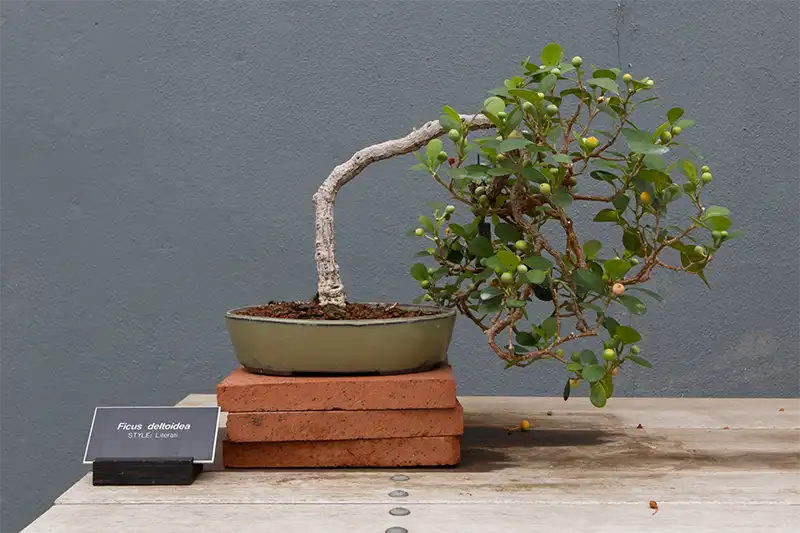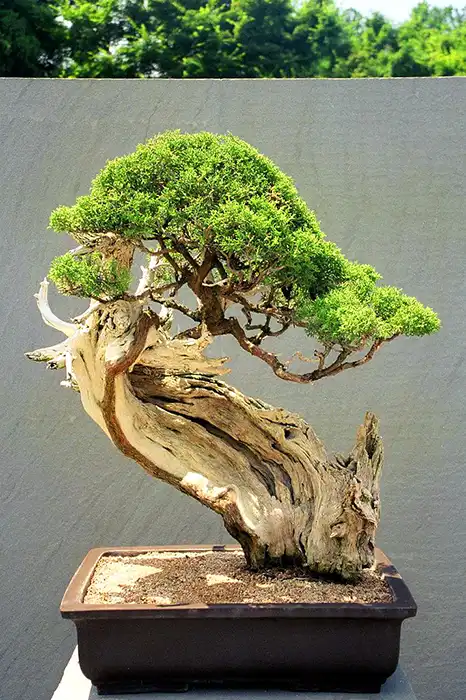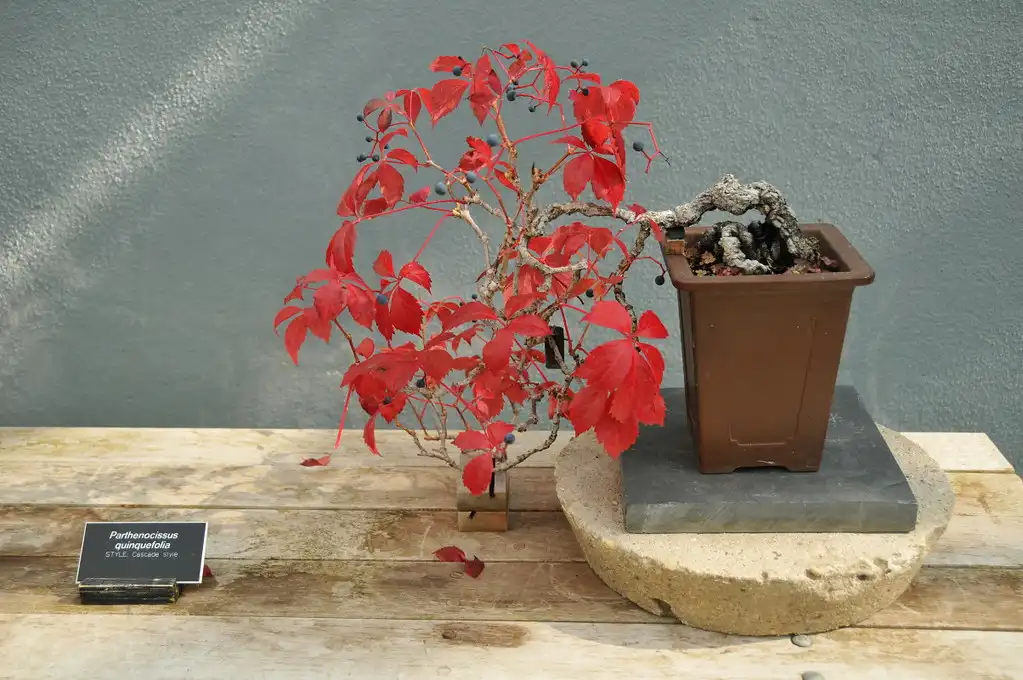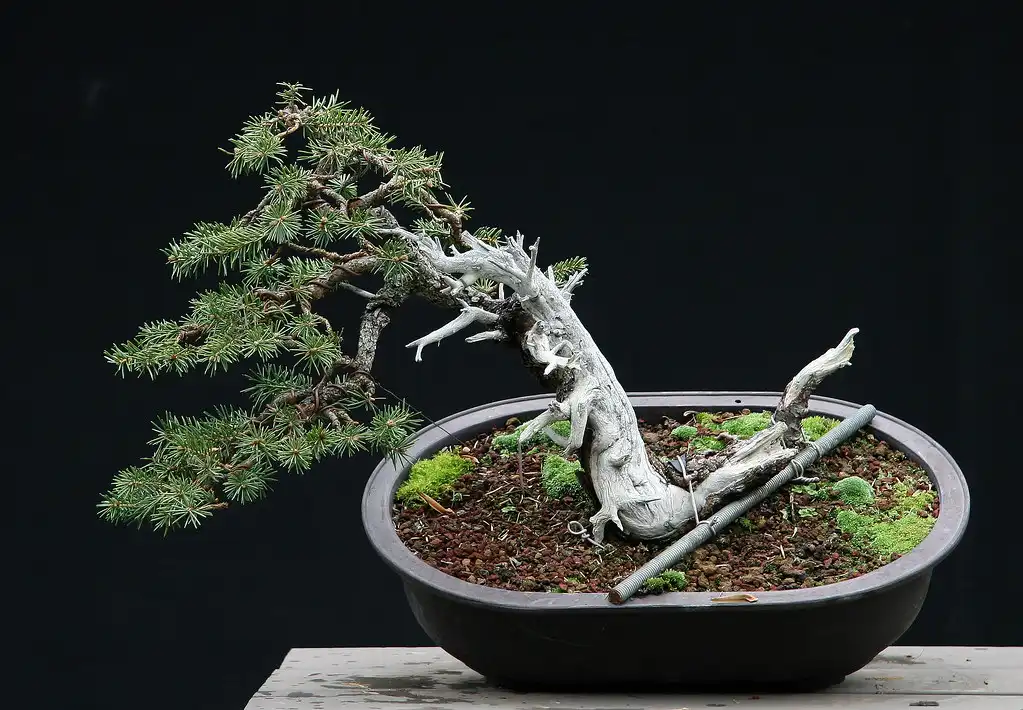What is a Literati Bonsai?
If you delve far enough into these stunning miniature landscapes, you may come across the term literati bonsai. No, it’s not a secret sect of the Illuminati that grows small trees. It refers to an approach to shaping and cultivating bonsais in a specific way, and you can use various styles to do so.
Welcome to our enlightening guide to the literati bonsai technique.
Image courtesy of 3.0 Unported
Bunjin or Literati Bonsai: What is it?
Have you ever seen weirdly shaped trees with interesting curves that don’t look like the standard designs? You’ll mostly notice it in places where the tree is fighting with buildings and other trees for as much light as possible. To achieve this, it curves the branches and trunk in a way to reach a spot with sufficient sunlight.
Bunjin, or literati bonsai, is the term used for this design reference. It’s not a bonsai style, but rather an approach to any of the styles that are compatible with it. The chief characteristic is how the branches curve and twist in a way that’s not natural, or defies traditional formal appearances. The Scots Pine is a popular species for this approach.
While it mostly breaks the norm when it comes to bonsai, it does add an air of elegance to your small tree. Many Chinese and Japanese artists have attempted to capture the literati design in their paintings, whether on canvas or on the side of containers.
Literati bonsai does everything that goes against the normal rules of bonsai styles. For instance, you may find branches crossing each other, or a stem twisting back on itself. The more freedom and tension there is in the design, the better.
The Literati Approach
To use the literati approach on your bonsai, be prepared to conjure up a defense against critics. They won’t understand why you made knots in your branches or why the leaves mesh together in an unnatural way. Every aspect allows you the freedom to develop your small tree as you wish, no matter what the bonsai rules state.
Where standard bonsais have balance, literati represents imbalance. There’s a complete departure from form, shapes, and lines that many experts employ. You’ll also find plenty of asymmetry to show off just how unusual the approach is.
Basically, your approach to the literati bonsai design is to break as many of the traditional rules as possible. You can still concentrate on a specific style, but you’ll deviate in how you apply it.

Types of Literati Bonsai Styles
Let’s make an example discussing the styles that work well with literati bonsai. You can have a sweeping, thin cascading branch that then loops up and over before heading down again. You may well even try twin trunk, where the one stem is much smaller than the other.
Another version is a forest of literati bonsai where the small trees looked clumped in a disorganized manner. Speaking of which, the clump style also works well in a small pot where there’s almost no space for the trunks. As long as it looks messy and with as few leaves as possible, you’ll have a stunning design.
Materials Needed for Literati Bonsai
In most cases, two-thirds of the bonsai tree has no branches or leaves at all. You won’t need to worry about tapering to a point, and you can work with any shape you wish. You’ll need a hardy tree that can withstand the tension you’ll cause in the stems.
Many people love using Junipers as literati bonsai for how easy it is to work with flexible branches. Pines and most conifers also work well. You may even want to try a Japanese Yew. When it comes to deciduous species, you may find that they tend to break too quickly, but there are some hardwoods you can twist while the sap is still soft.
To achieve your designs, you’ll need to work with clamps, weights, and thick wire. These tools will assist you in bending and forming new lines with stems and branches. While it’s best to work with small containers, you can also use a rock to emphasize the crude shape.
Image courtesy of 4.0 International
Maintaining a Literati Bonsai
Since most literati bonsai are top-heavy, they can blow off a table easily when there’s a strong wind. It’s best to tie the container down or place some rocks in the base of the pot. You’ll still apply the same amount of water and fertilizer as normal for the species, but you may end up pruning more than you’re used to, keeping new shoots from growing.
Inspiration for Literati Bonsai
Finding inspiration for literati bonsai is available online in so many forms. For instance, you can check #literatibonsai on Instagram for creators who showcase their photography and explain how they approached the technique. For more images, you can also search on Pinterest for some ideas.
Of course, it always helps to view videos on how to achieve different literati bonsai designs. YouTube is an excellent example of a platform where you can see the masters at work. You should see our own channel develop some of these tutorials in time to come. Image courtesy of 4.0 International
Image courtesy of 4.0 International
Final Thoughts
We know that many of you probably would like to stick to traditional styles. However, it’s a nice break to simply create your own design, which is where literati bonsai comes in. You don’t need to feel bogged down by the rules, and you can make a sweeping form in any shape you would like.
It’s an incredible approach, as long as you know the basic forms and learn how to do the opposite.







